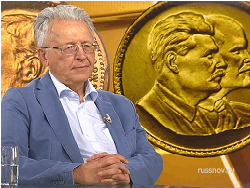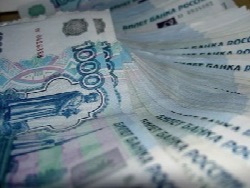
“Taking money” financiers — the same ultima ratio of Central bankers, how the kings served the guns.
The contemporary global economy operates according to rules that change as fast as they never changed during the previous decades. In 1970-e years, economists were surprised as corny as it seems now, the phenomenon of stagflation — rising prices occurring in the conditions of economic recession; in 2010’s the next innovation has become the economic growth on the background of negative interest rates.
By itself, the phenomenon of negative interest rates looks unnatural from the point of view of any one of describing the movement of loan capital theories. In theories of Adam Smith and Karl Marx credit was viewed as a means of providing the owner of one of the factors of production, and the percentage was the form of compensation of owners of such factor along with the profit and rent. In the concept of E. böhm-Bawerk and his followers the percentage arose from the difference in utility of wealth present and future benefits, speaking a kind of “price expectations.” According To John. M. Keynes interest is a monetary phenomenon, which is formed spontaneously, in the course of comparison of the demand for money and their suggestions. However, whatever definition the percentage, it could not be negative. In the first case, the money remained a factor of production, the second can not be assumed that all in society are the ascetics who refuse cash benefits in favor of the hypothetical third rule out a negative demand for money. None of these assumptions is not realistic today.
For the first time negative interest balseviciaus in Japan in 1991, when deflation, coupled with low investment activity led to the fact that banks could not profitably place their money and, in fact, began in this form to charge customers a fee for the service accounts. But that was the exception, today it is transformed into the rule: already Central banks start to charge for the fact that commercial banks hold funds on correspondent accounts they have.
As of 1 July 2016 is practiced by the European Central Bank (-0.2 percent per annum), the Riksbank (-0.25 per cent), Bank of Switzerland and Bank of Denmark (-0.75 per cent) and the Bank of Japan (0.1% fee). With the end of 2014 into negative territory began to yield and the bonds of several national governments — Germany, Switzerland, Netherlands, Austria, Denmark; by the middle of this year, the total amount of government bonds with a negative yield in the Euro area Є2,6 trillion, and it got even obligations of Italy, Spain and Portugal — countries which until recently predicted the default (in Germany, a negative yield was 76% of all Bunds totaling Є781 billion). Everything in the world negative returns are government bonds total $11.7 trillion (that is about a third of all government bonds), and their volume grew by 12% in less than two months. Remains the leader Japan, which accounts for over two-thirds ($7.9 trillion) of such obligations.
Naturally, the question arises: what is the reason for this and how long can this Orgy?
The first part of the question has a fairly simple answer. Negative rate — is a means of forcing economic entities to invest. Faced with the fact that conservation does not generate revenue, the owners need money to start buying stocks, real estate, invest in the expansion of production. “Taking money” financiers — the same ultima ratio of Central bankers, which the kings, as we know, served the guns. Why this method works now, but couldn’t work before, it is also clear: for centuries, anyone who would encounter such a robbery could just put the money in the safe and pay cash, but now this practice is problematic even for private individuals and for industrial and financial companies was eliminated. Corporate clients have no alternative to Bank accounts and transfers — and if the Bank intends to take, say, 0.4% per annum for lying in the accounts of the funds to pay the ECB 0.2% per annum and receive a small profit, it will only go in the less loss-government bonds: for instance, why not buy a Spanish three-year paper with attractive yields -0,09%?
It may seem that this — albeit strange — situation does not look catastrophic: the new system makes investing those who are not really wants; opens access to credit for start-UPS; resolves problem with almost hopeless state of debt (after all, if not only appealing, but also newly-issued bonds will have negative returns, the budget deficits will no longer someone to worry about). However, there is no doubt that the new trend will face challenges — and here we come to the second part of the question.
No doubt there will be intermediaries — is enough to recall the emergence of the market of Eurodollars” due to the needs of the Soviet Union and caused the erosion of the monopoly of American banks on dollar deposits. In our case, there are certainly banks outside of the Euro zone or yen, which will offer clients a guaranteed Deposit of funds at 0%, as will appear, the rating agencies that assign such funds to the highest rating of reliability. Today no problem so to hedge the risks to this arrangement really proved to be reliable and to issue a certificate of Deposit, deposited in banks and taken in the calculations will be only a matter of time — in any case it is naive to assume that negative rates could continue to go down.
Today banks use negative interest only to corporate clients but no one has yet tried to extend it to individuals because those have a simple answer: to take their money. Savings and retirement accounts in any developed country are unlikely to be subjected to such a “haircut” for banks, this will result in too many problems. Of course, financiers will find ways to profit here: increase commissions for cash withdrawal, the fee for transactions on payment cards, etc., but still a definite hindrance to the conduct of private customers will not be able to become. It also forms the understanding that the negative rate will likely fluctuate at the current levels, what will go down.
You can suggest another option, namely that a negative nominal interest rates will still be really positive (which can happen if deflation is even faster). Of course, negative rates of the imagination, but they will surely find ways to make this phenomenon temporary. Or at least to reduce the rates to, say, “Okolona”. And does anyone doubt that the author of the book, almost a seer?








